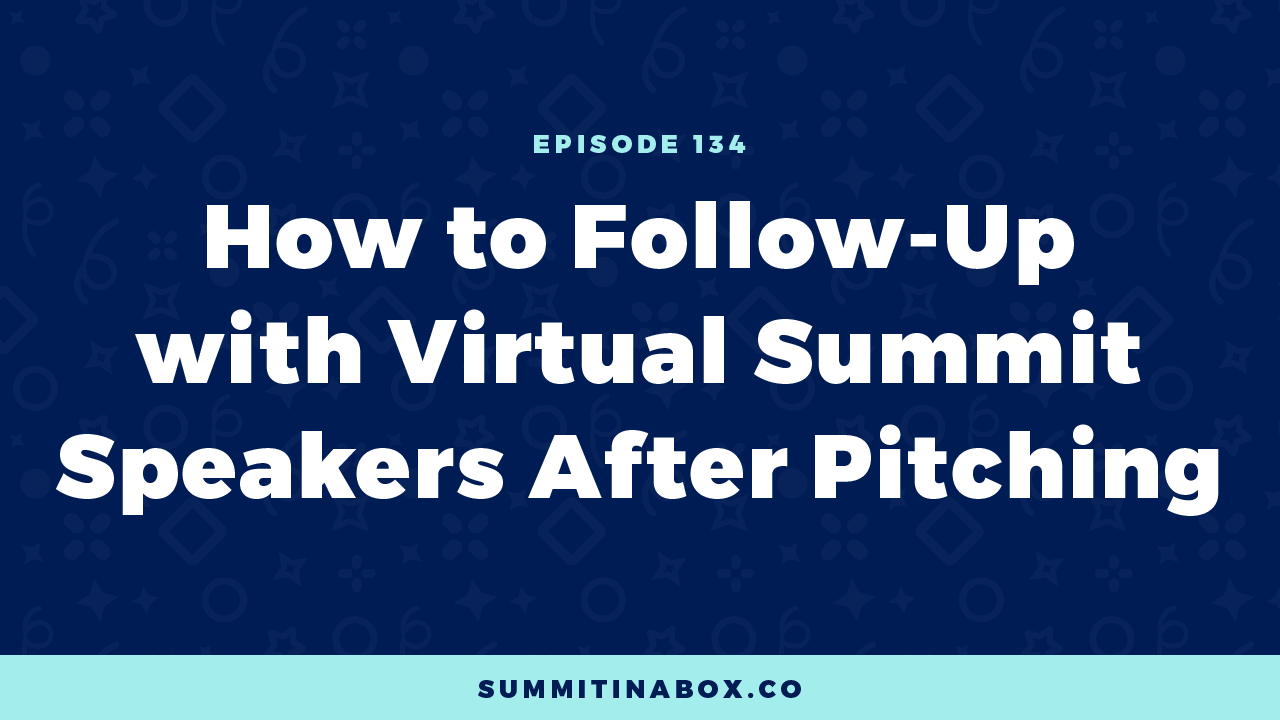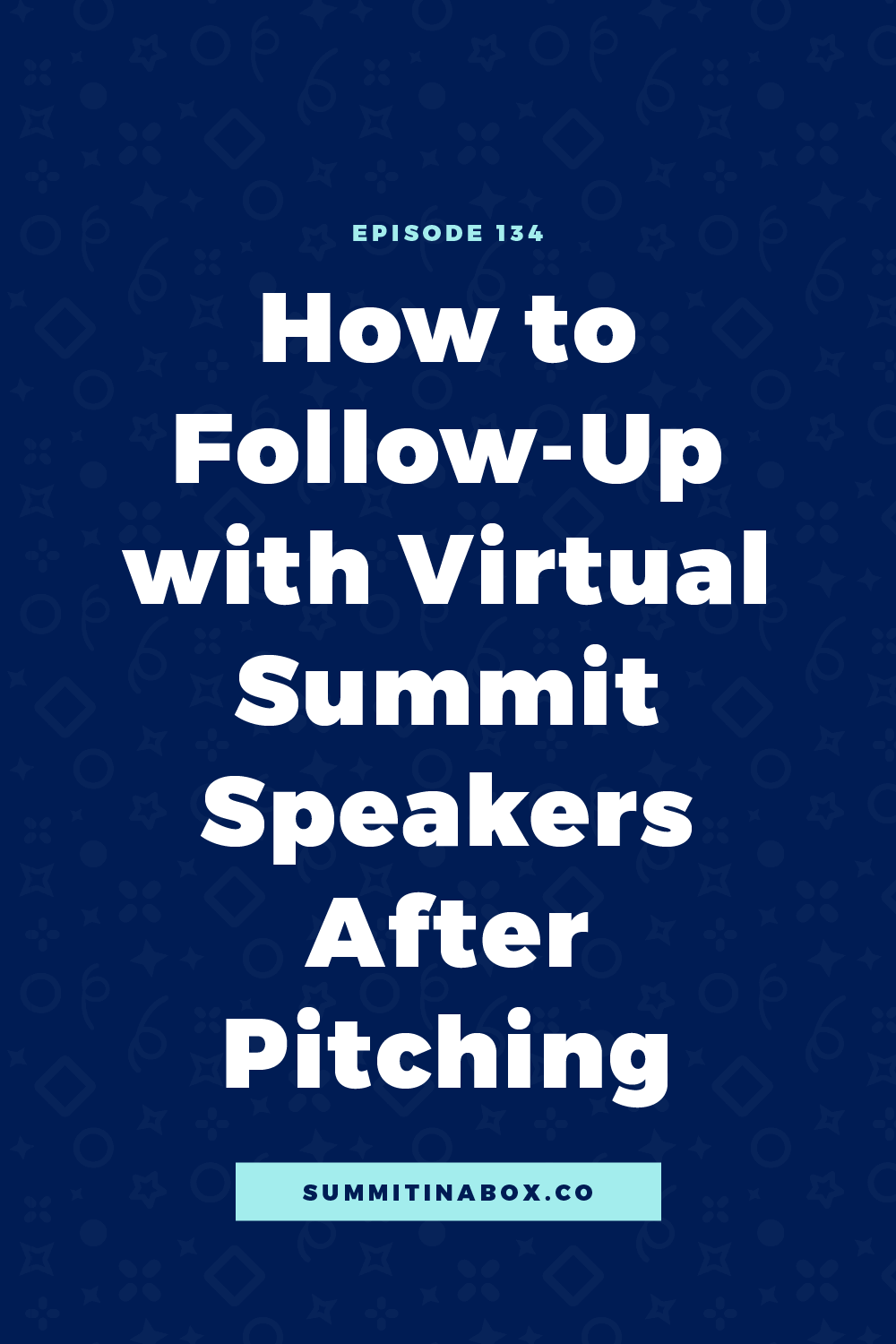How to Follow-Up with Virtual Summit Speakers After Pitching


Odds are, when you start pitching virtual summit speakers there's going to be a handful that you don't hear back from right away.
You're dying to hear back, but just keep waiting...and waiting...and waiting. What should you do in that case? Follow-up? Assume they're not interested?
As uncomfortable as following up can be, it is 100% something you should do. You never know why someone didn’t get back to you.
In this episode, we'll dive into:
- whether you should follow up with virtual summit speakers after pitching
- when to do it and how many times
- and I'll share my favorite no-pressure follow-up strategies.
Virtual Summit Speaker Follow-Up
Knowing if or when to follow up with speakers can be tricky. You send the pitch email and then you don’t hear back. Should you email them again? Do you leave them alone and assume they’re not interested?
I don’t know how many of you are like me, but I hate following up with people. The feeling of pressuring or pestering someone makes me more uncomfortable than it probably should.
Like all the other strategies I teach, this is going to be a gentle, feel-good approach. You're not going to see me sending threatening emails about how much they're going to miss out by not participating or that I'll go to the next person in line or anything like that.
No matter how uncomfortable I personally feel about following up with people, I absolutely think it's necessary.
You need to remove yourself from the equation.
- What if your email ended up in their spam folder?
- What if they saw the email, wanted time to think about it, and then forgot?
- What if an assistant forgot to pass it along?
- What if it simply got missed in a sea of other emails?
- What if they were on vacation?
There are so many reasons someone might not have sent you a response other than they saw it and weren’t interested, so it’s important to follow up.
Tip: Use MailTrack
Something I did for my last summit was use the free version of MailTrack to see who opened my emails. That way, at least I knew who straight-up hadn’t seen the email yet. However, even if I could see that they opened the email without answering, I still followed-up.
When to Follow-Up and How Often
So we know we should follow up when we don't hear back from a potential speaker, but when? How often?
This is more of a personal preference, but I follow up about 4-5 business days after the initial email. I wouldn’t wait any longer than a week to send a follow-up email.
As for how often, one follow-up is plenty. I only do one follow-up because if I can see that someone opened my emails and didn’t respond, that’s a good clue they aren’t interested.
More importantly, as someone who knows what it’s like to have to chase down speakers to get presentations and other material, I don’t want a speaker that I’m going to have to email multiple times every time I need something from them.
It’s actually a red flag to ME when a speaker doesn’t respond in a timely manner.
How to Follow-Up with Potential Speakers
Next, let’s move into the “how” to follow up with the speakers aspect. I don't like to be pushy about things and my strategy reflects that. I'm not here to pressure anyone into participating.
When I send my follow-ups, I send both an email and an Instagram voice message, because my people tend to be on Instagram.
The email is a more formal follow-up.
The voice message on Instagram is a more personal touch and people almost always respond well (whether or not they agree to speak) when they have the extra connection that comes with hearing your voice.
Follow-Up Examples
I keep both follow-ups short and sweet. Here are two examples:
An example of my follow-up email is:
Hi [NAME],
I wanted to follow up with you quickly to see if you’re interested in participating in the [NAME OF SUMMIT]. No pressure, of course, but I’d love to have you!
I’ll need to hear back by [DATE]. Let me know if you have any questions.
An example of my Instagram voice message is:
Hi [NAME],
I hope you’re doing well! I sent an email your way last week and wanted to reach out here in case it landed in your spam folder.
I’m hosting the [NAME OF SUMMIT] and would love to have you speak on [TOPIC]. There’s more info in the email and absolutely no rush to jump over and respond or to respond here, but I wanted to make sure I wasn’t lost in spam. Looking forward to hearing back when you have time to take a look!
Even if I can tell someone saw the email, I use the spam folder positioning to remove any pressure from them. I hate feeling pressured to respond to people in Instagram DMs, so it’s my attempt to extend the courtesy I’d like.
Keep Speaker Follow-Up Light
Should you follow up with your summit speakers? Absolutely - you never know why someone didn’t respond.
But keep your follow-up light, if only for the purpose of making sure you have speakers who will be responsive throughout the summit planning process.



